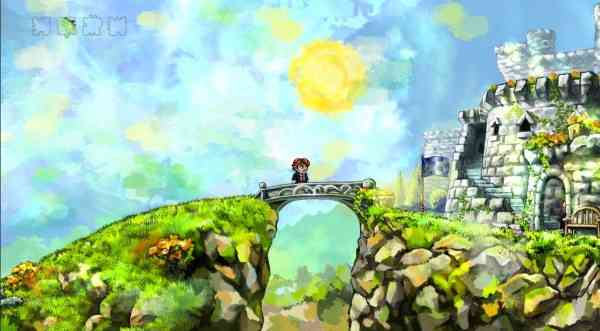Being a self-admitted nerd, I’ve got a LOT of games on my PC. When it comes to multiplayer, the three games I’ve played most of over the past two months haven’t been Call of Duty, Far Cry or any other full priced titles. Instead, the games that have eaten up my sleep schedule are Insurgency, Depth and Reflex. And according to Steamcharts.com, it’s not just me. Going through the top 25 most played games on Valve’s digital service, the only ones that could be considered AAA are Skyrim and Dying Light. One game that has been out for years and another that only just came out last month.
Two of the most popular shooters of 2014 were Titanfall and Call of Duty: Advanced Warfare. Yet, on PC, Titanfall struggles to keep a thousand players in Team Deathmatch, and Advanced Warfare has an average player count that is rivalled by Insurgency, a Halflife 2 Mod turned 15 buck shooter with a distinct lack of budget, marketing or Kevin Spacey.
So how is this? How can multi-million dollar productions that essentially print money on consoles become a ghost town within a few months on the personal computer? Well, there are multiple factors in this phenomenon.
Culprit #1: Consoles
PCs have always king of the hill when it came to video game technology. If you want to play the best looking or technically demanding games, you buy a PC. For the large majority of their existence, consoles have been playing catch up to their PC counter parts. Typically, when something is innovated on PC, it will become standard practice on consoles within 3-7 years, not counting all of the early attempts that fail.
Years ago if a developer or publisher wanted to capitalize on top-of-the-line shooters or driving games, they would make it for PC. The audience for these products primarily originated in the realm of mice, keyboards and joysticks. As consoles became more and more powerful though, new franchises began their lives on consoles, and imported ideas, concepts and game mechanics that were once exclusive to PCs. Halo brought first person shooters to the Xbox; Gran Turismo brought realistic driving games to the PlayStation and SOCOM brought tactical online multiplayer games to the PS2.
“Years ago if a developer or publisher wanted to capitalize on top-of-the-line shooters or driving games, they would make it for PC.”
Culprit #2: Indies
Around the same time that consoles were experimenting with successful games on Xbox Live Arcade and Playstation Network, Indie Games were rapidly expanding on PC.
Indie Games used to be sidescrollers and comedy games powered in Adobe Flash, but it wasn’t long until indie games were rapidly taking over the PC market with titles such as Minecraft, FTL, and Chivalry: Medieval Warfare. Along with the advent of crowd funding sources and cheap/free access to powerful game engines, Indie Gaming has taken over the ill-fated middle market, as the alternative to triple AAA gaming. If you want a more affordable title that’s where you go.
It’s become such a large market, that both Microsoft and Sony have now used their support for independent developers as a selling point for their consoles. It’s difficult to find a gamer these days who doesn’t have at least a handful of indie games in their collection, regardless of whether they’re on PC or Console.
“Indie Gaming has taken over the ill-fated middle market, as the alternative to triple AAA gaming. If you want a more affordable title that’s where you go.”
Culprit #3: DLC
PC gamers always had the ability to keep their most popular games fresh and new thanks to support from both developers and modders. New maps, guns or levels were usually one website or magazine cover disc away. As DLC became more of a standard practice on the console market however, paying 15 dollars for new maps or single player content was more or less adopted by a large portion of the gaming community.
Thanks to the advent of fifteen-dollar games created by independent developers, PC gamers are now used to being able to have a completely unique gaming experience for the same price as a mere five maps in a game they could have paid $70 for in the first place.
“PC gamers are now used to being able to have a completely unique gaming experience for the same price as a mere five skins in a game like Evolve.”
End Results
The majority of multiplatform games sell low numbers of units on PC. This in turn, means that publishers aren’t encouraged to release a decent PC build, as it will most likely not bring in the majority of sales. The mistake that these companies make, however, is that they are missing out on a market where they can make money off a game potentially years after its release. Titles such as Half Life, Elder Scrolls V: Skyrim and S.T.A.L.K.E.R. all embrace big sales, and mod support to ensure that their games are consistently on the best sellers list. Day Z spiked the sales for ARMA II tenfold, to the point where the mod started being advertised on boxed copies of the game. Even if a game doesn’t have extensive mod support, frequent updates and sales encourage new and old players to keep coming back. Insurgency, Chivalry and Counter Strike have strong multiplayer communities to this day.
The variety, low cost and innovation of the digital PC market is incompatible with this DLC model that is practiced by the biggest publishers. There are always exceptions to the rule, but what is more appealing to the consumer? Spending $15 on a map pack? Possibly a few map packs so that you have all the content? Or, buying a brand new game that can last you hours, weeks or months for the same price?
If developers and publishers don’t want their game to quickly fade out of the public’s attention in the PC market, they need to be a little more generous and begin to trust their customers. Putting up barriers at every turn to make extra money more often than not, only works in the short term.
After all, the tortoise beats the hare.



